The most crucial component of a vehicle is the engine, which is not exactly a mystery. You won’t be able to drive around for very long if your car’s engine is damaged.
This is why you need to be aware of how to spot a faulty engine. You should act quickly and have your engine fixed at the first hint of difficulty to avoid making a little issue much worse.
Several issues might arise with your vehicle. While some issues are merely inconvenient, others may make it impossible for the car to move. Driving a car with a damaged air conditioner, for instance, could not be particularly comfortable on a hot day.
However, a car with a damaged engine cannot be driven. Fortunately, you may preserve your engine before it fully fails by recognizing the telltale indicators of an unhealthy engine.
It’s critical to get your vehicle repaired as soon as you become aware of any of the potential engine failure symptoms. Driving with a failing engine might harm the car and require expensive repairs in the future. Keep an eye on your engine, and always seek professional advice if you’re ever unsure of what to do.
What are the most typical symptoms of a failing engine, then? Today, we’re going to talk about it. The most typical indications of a malfunctioning engine are listed in this article for your convenience. Find out what causes an engine to break down and what to watch out for when it comes to the symptoms of a broken engine by reading on.
What Is the Mechanism of an Internal Combustion Engine?
The power required to drive your car is produced by the engine’s components working together. The crankshaft is turned by the up-and-down motion of the engine’s pistons. The engine’s flywheel is linked to the crankshaft, which promotes smooth operation.
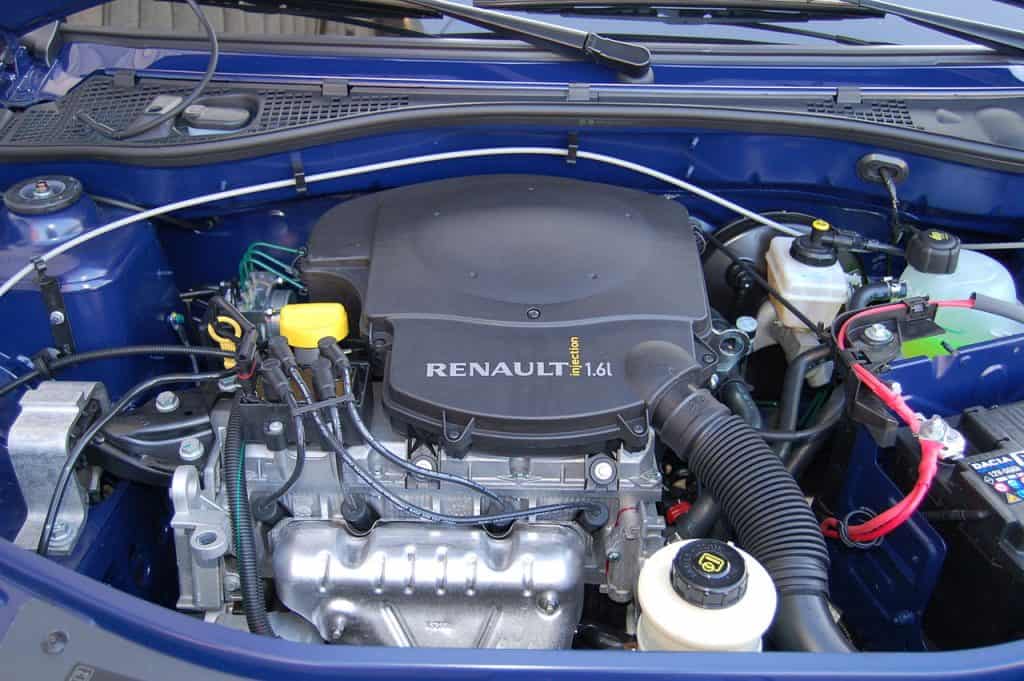
Internal combustion engine by Huhu Uet / CC BY-SA 3.0. The engine is the vehicle’s most important part. If the engine in your car is damaged, you won’t be able to drive for very long.
The pistons of the engine raise and lower themselves, creating a vacuum in the combustion chamber. From the engine’s intake manifold, this vacuum draws in gasoline and air. Then, in the engine’s cylinders, the gasoline and air are combined. Power is produced when the mixture is ignited by the spark plugs.
The car’s wheels are turned and propelled forward or backward using the power generated by the engine.
Which Ones are the Most Common Signs of a Bad Engine?
Now that you are aware of the reasons for a faulty engine, it is time to discuss the many symptoms of a damaged engine. There are several indicators of an engine problem that you may notice when operating your vehicle.
Always keep an eye out for these signs, and pay attention to them if you see them. They will inform you that you must take your vehicle to a mechanic right away to have the engine serviced. Here are a few of the most typical indications of an engine problem.
1. A Check Engine Light Comes On
When there is an internal problem with your vehicle, the computer will let you know by turning on the check engine light. While the check engine light is usually an indication of a small problem, it may also sometimes be an indication of serious issues that could cause the vehicle to fail. As a result, once the check engine light comes on, you should never ignore the issue and instead take your car to the shop right away.
The check engine light may be illuminated for reasons other than an engine issue, including problems with the gearbox, steering wheel, turbo, or any other internal component of the vehicle. You must take further measures to verify that the issue is related to the engine of your vehicle.
You need to read and translate the check engine light error as your first step. Utilizing a code reader tool allows for this. The code reader may be attached to the vehicle by either you or your mechanic. Once it is connected, it will display the problem code, what it signifies, the cost of repair, and the necessary replacement parts.
For instance, the following list of engine-related codes and problems for cars:
- P0302: This mistake points to a second cylinder misfire.
- P0301: This error signals a misfire with the first cylinder.
- P0A0F: This error means that the engine was unable to start.
- OBD II Fault: This error indicates that the engine oil level sensor circuit is malfunctioning.
- P0008: This error code denotes problems with the engine position system’s functionality.
- P011A: This error number denotes a problem with the temperature of the engine coolant.
- P0298: This error number denotes a problem with the engine’s oil heating up.
- P0524: This error number denotes a low oil pressure in the engine.
2. The Engine Loses Power
Your engine performs a lot of different tasks within the context of your car. However, its primary function is to provide the force required for your vehicle to move ahead.
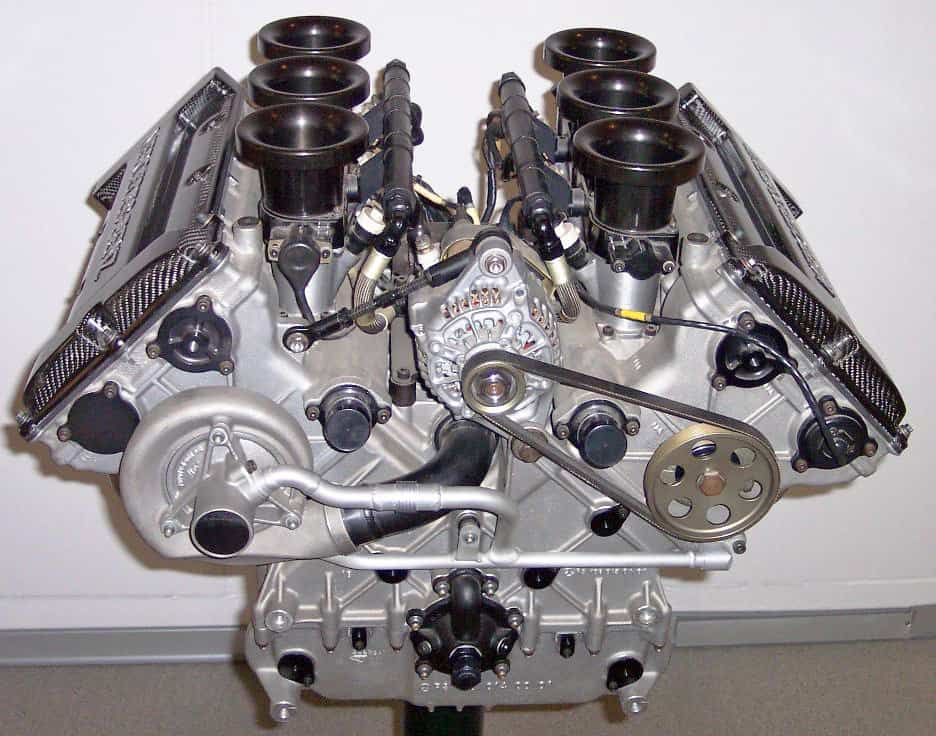
V6 internal combustion engine by Till.niermann / CC BY-SA 3.0. Your car’s computer will let you know if there is an engine issue by turning on the check engine light.
Given this, it shouldn’t come as a huge surprise to learn that one of the most obvious symptoms of an engine problem is a loss of power. If your car dies unexpectedly and won’t start again, there may be an issue with your engine that has to be fixed.
This could be the most evident indication of a failing engine out of all the ones discussed here. If your engine isn’t producing the necessary amount of power for your vehicle, you don’t need to be a rocket scientist to realize that there is a problem.
You will need to tow it to an auto repair facility so that they can identify the precise issue with your engine and consult with you on a solution.
3. The Engine Constantly Stalls
In the worst case, when there is a problem, an engine will typically completely lose power. However, when you have a damaged engine, your vehicle might not completely switch off in many different situations.
When you’re driving, it’ll just frequently and early stall out on you. This frequently happens when your car’s engine can’t obtain the appropriate balance of gasoline and air.
When your vehicle stalls down frequently, it may be humiliating to be driving. You’re going to be constantly stopping at stop signs and parking meters.
Driving a car that stalls out considerably more than it should also be quite risky. If you stall out and another motorist isn’t anticipating it, you can end up in an accident. It’s why you shouldn’t ever disregard this warning of a faulty engine.
4. Fuel Economy of the Engine Nosedives
Do you believe that simply to keep your car running, you need to fill the tank with petrol every few days? This might be typical if you commute a lot by car.
But if you’re going through considerably more gas than you used to, it might signal that there’s an issue with your engine. Your car is using more fuel than it should get you where you need to go for one reason or another.
This might be caused by a wide range of various things. Your fuel efficiency can suffer if, for instance, your tires don’t have enough air in them.
If you frequently drive more quickly than normal, your fuel efficiency may suffer as well. However, the issue might also be caused by an engine issue. To restore your vehicle’s fuel economy to normal, you’ll need to have a professional look it over.
5. Strange Noises Begin Coming from the Engine
You should hear your car’s engine growl when you press the gas pedal while you’re driving. Your engine should not make any banging, hissing, popping, or backfiring noises. Any of these noises coming from your engine is a clue that it needs to be repaired.
They’ll draw attention to the fact that one or more components of your engine aren’t operating as they should.
You might first be inclined to crank up the radio to block out these noises. You might also wish for them to disappear on their own. However, these noises frequently develop worse over time and eventually give rise to additional noises.
You should take your vehicle to a professional to get the engine checked out rather than disregarding these symptoms of a faulty engine.
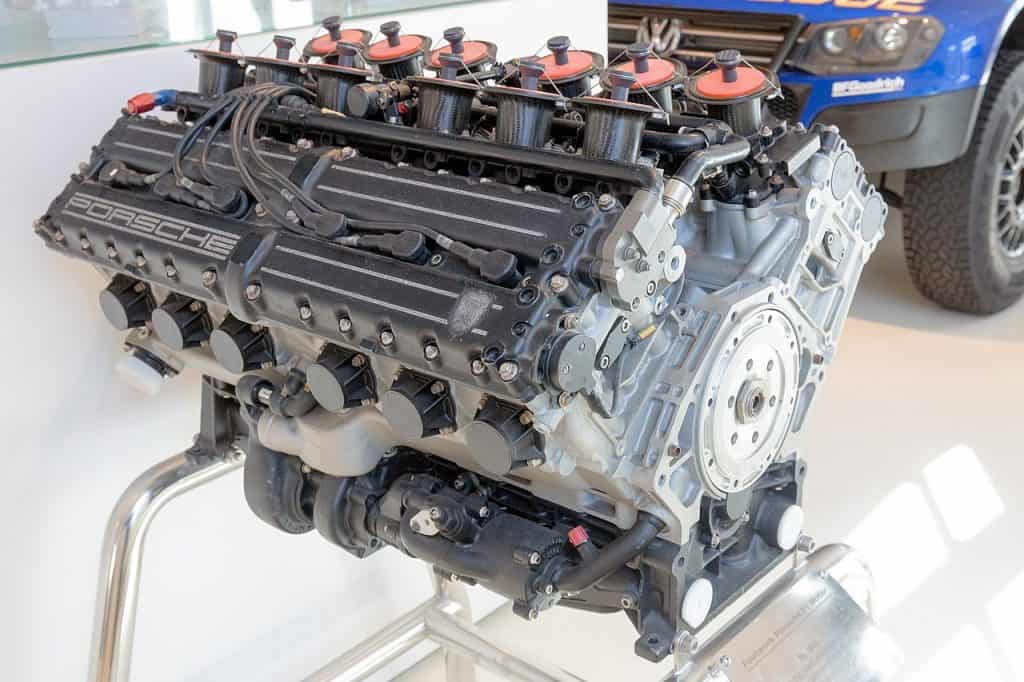
Porsche 3512 engine by Morio / CC BY-SA 4.0. Usually, an engine will lose all power when it is damaged. In a variety of circumstances, the car might not entirely shut off.
6. Engine Starts Creating Bad Odors
Sometimes a damaged engine may make more than simply odd noises. Additionally, it could produce unpleasant smells and release them both into the environment and within your vehicle. It will be nearly hard for you to drive your vehicle in peace due to these scents. They could impair your ability to drive and, in rare cases, might even be dangerous to your health.
Any offensive scents coming from your engine’s direction are often a sign that the internal combustion process in your engine isn’t working as intended. To find out what’s wrong with your engine, you’ll need to phone a mechanic and ask them to smell it.
7. Engine Keeps Running Even After the Car Is Off
What do you anticipate to happen when you turn off your vehicle and remove the key from the ignition? Of course, you anticipate your vehicle to shut off. But it won’t always happen when you have a faulty engine. Even if you’ve attempted to switch off your vehicle, the engine may still be running because of a failed solenoid in the engine or a problem with the carburetor.
This may put you in a difficult situation. When you’ve attempted to switch off your vehicle but it won’t go off, what in the world should you do?
It is one of the symptoms of a broken engine, therefore you should immediately take your vehicle to repair. Before determining what is causing your vehicle to stay on longer than it should, they will be able to temporarily switch it off.
8. The Engine Sounds Rougher Than Normal
There can be moments when the engine in your vehicle simply doesn’t seem right. When you are driving or even sitting still, it will operate harsher than usual. You will be informed if there is a problem with your engine.
It’s possible that you require new spark plugs or that your engine system has blockages of some sort. In any case, a rough-running engine won’t get better on its own. This indicates that your engine is malfunctioning, so you should get it checked out by a mechanic as soon as possible.
9. Engine Rattles and Trembles
Your car’s various engine components may be having a problem if you discover that your engine rattles after you drive.
If you’re lucky and the problem isn’t serious, it could only be that the spark plugs need to be replaced. If so, all that is required of you is to replace the outdated spark plugs with new ones.
Problems with the engine hoses may be more expensive. For instance, the hoses may develop fractures and wear over time from use. If this is the issue, all you need to do is replace any hoses that are fractured and tighten any that are loose.
Other more difficult problems that make the engine shake include problems with the timing belt, motor mounts, and fuel intake.
Unless you have the necessary technical knowledge and comfort level undertaking such repairs, these serious concerns could need to be replaced or repaired by a professional mechanic.
10. Strange Smoke Emanating from the Engine
As a general rule, any smoke coming from the engine of your vehicle is a blatant sign of significant engine issues that might cause the engine to completely fail. Your engine’s smoke could be caused by a variety of things, including problems with the cylinder head or head gasket.
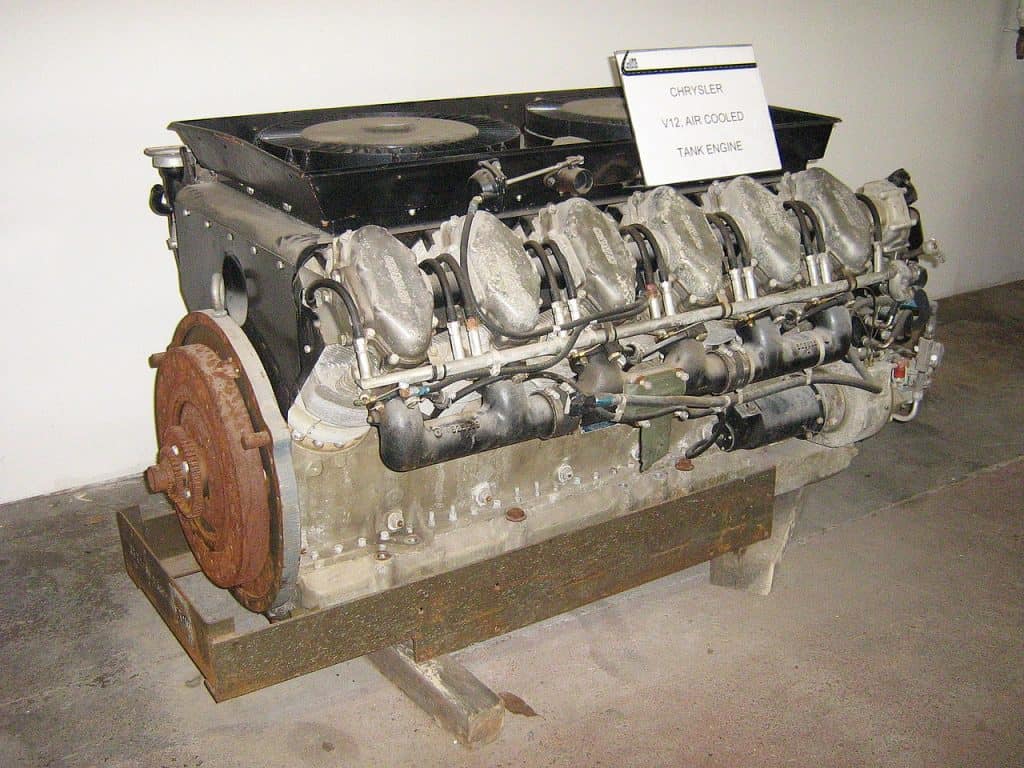
Chrysler A65 prototype tank engine by dave_7 / CC BY 2.0. Black smoke may not indicate an engine issue. However, any malfunction with an internal engine may result in black smoke.
The hue of the smoke may reveal some details regarding the main issue with the engine of your vehicle. For instance, blue smoke is a sign that the combustion system is leaking oil because of breaches in the piston rings or any other locations around the cylinders.
Black smoke, on the other hand, doesn’t reveal the problem’s primary cause. In other words, any internal engine issue will produce black smoke.
A blocked air filter, faults with the emission control system, or problems with the ignition timing are some of the main factors that might be causing the engine to smoke. You must take your vehicle to a qualified technician, no matter what the issue is.
It is never advised to attempt these fixes on your own because they call for a very high level of mechanical expertise. Otherwise, if you did it incorrectly, the engine of the vehicle can suffer severe damage.
11. Engine Overheats More Frequently
Unless it’s really hot outside, your engine shouldn’t typically take a long time to cool down or reach its regular operating temperature.
You must act and examine a few items if your engine doesn’t cool down and there are overheating symptoms.
The engine coolant has to be checked first. The engine may be having trouble cooling down because of a leak that has reduced the amount of coolant in the engine. If this was the problem, you may take care of the leak’s origin and top off the coolant until it is at the ideal level.
If you establish that the coolant doesn’t leak and it is at the ideal level, the second item you need to check is the water pump. If you find that the water pump is defective or not functioning correctly, you must replace it. In severe cases, you might need to replace the full radiator part.
Remember that it is quite expensive to replace the radiator or the water pump. So, be careful to check the coolant first as that can be the primary problem. To cut down on repair expenses, it is advised that you purchase the radiator or the water pump separately if you determine that you need to replace them.
12. Visible Oil Stains Below the Vehicle
Generally speaking, any kind of fluid puddle under your vehicle is a very dangerous symptom of a fluid leak, and you need to take the necessary steps. If the leak is particularly significant, you might not always be able to move your vehicle.
Although a fluid leak necessitates a prompt diagnosis by a qualified mechanic, it doesn’t exclude you from quickly troubleshooting the issue to find the source of the issue. Here are some examples of best practices for handling an oil leak under your car:
- It’s crucial to remember that some oil leaks can cause a fire. To prepare for circumstances like these, you must maintain a fire extinguisher in your car.
- You can identify if fluid is your engine’s oil or anything else by looking at its color. For instance, the transmission fluid is red if it is present. The engine oil is present if the fluid is dark brown or black.
- You can determine where the leak is coming from by smelling the oil. For instance, if the oil smells burnt, the engine block is where the leak is coming from.
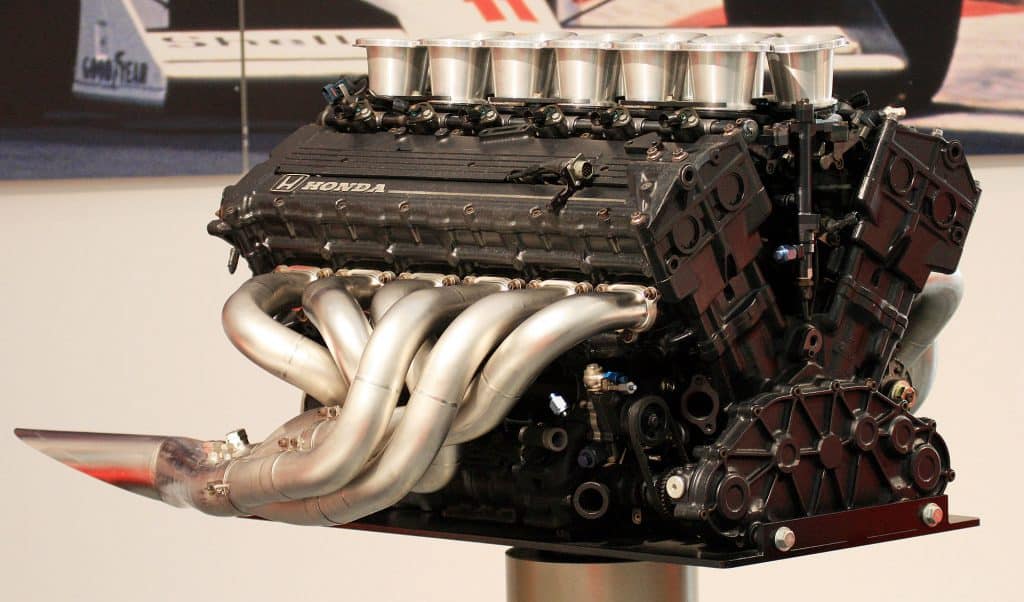
Honda RA121E engine by Morio / CC BY-SA 3.0. A leak that has decreased the amount of coolant in the engine might be the reason for the engine’s difficulty cooling down.
- Perform a manual search for engine leaks. Because every car has a unique construction, it might be challenging to locate the many engine parts that could be leaking oil. There is also no clear location for these parts. So, we advise you to do your homework and find the oil pan drain stopper, the timing cover seal, the valve cover gasket, and the valve cover seals. Once you’ve found them, have a look around to look for any potential leaks of oil.
- Look for any loose connections and tighten them. You might be shocked to learn that your engine’s issues are all being caused by a single small bolt. Check any potential weak connections as a result. Check everything, including the caps, covers, nuts, and valves.
- You must have a qualified technician work on your vehicle. Many individuals like trying easy do-it-yourself fixes for their cars. It is well known that the majority of DIY projects fail the first time you attempt them. Because of this, it is not advised that you attempt any do-it-yourself engine repairs. This is because there is no space for error. After all, some errors might result in serious, irreparable engine issues.
13. A Misfiring Engine
When not enough gasoline is supplied to the engine’s cylinders, this is called operating ‘lean’. It is a condition that has led to numerous engine replacements and rebuilds that would not have been required otherwise.
When the engine is operating lean, it might misfire and run badly. You’ll stumble and feel like you lack power. As a consequence, your engine will start to “ping,” but the damage that is occurring inside the engine is more significant.
The fact that gasoline cools the interior of the cylinder may surprise you. Insufficient fuel might result in each cylinder burning too hot and having a serious malfunction. Exhaust gaskets or piston rings may become burned out. Your spark plugs may prematurely wear out as a result. Or, if it’s ignored for a very long time, your piston itself might burn out.
Numerous factors might contribute to running wealthy or thin. Fuel injector leaks or fuel pump failure are two potential causes. It can be tainted fuel or a clogged fuel filter. Whatever the underlying issue, it must be resolved concurrently with the engine repair or engine replacement you carry out.
What Leads to a Bad Engine?
We’ll discuss some of the symptoms of a damaged engine shortly. However, before we do that, we’d want to take a moment to briefly discuss the potential causes of some of the symptoms.
You should take all necessary precautions to prevent engine problems from harming your vehicle, and learning about the potential causes of difficulties is a smart starting step.
One of the main factors that will lead to you seeing some of the symptoms of a bad engine is not changing your car’s oil frequently enough.
You must always have adequate oil in your vehicle, and it shouldn’t be any older than necessary. It will keep your engine and all of the components inside of it running smoothly.
The symptoms of a bad engine might appear for a variety of reasons, though, not just a lack of new oil. Your car’s engine may experience issues for other reasons. Here is a handful of them:
- Water entering your engine in too large a quantity
- Your cooling system does not have enough coolant.
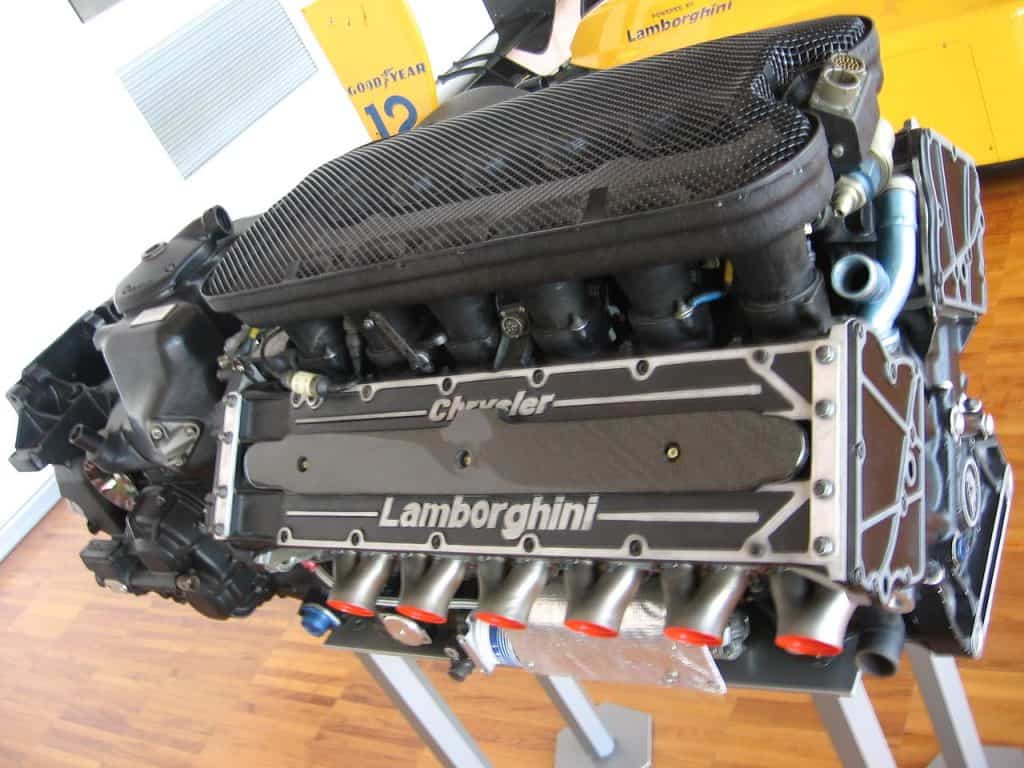
An engine that is running lean may misfire and perform poorly. You’ll stutter and have a sense of weakness.
An issue with your car’s engine is the last thing you want to handle. Therefore, you should make every effort to stop these issues from materializing. You’ll be able to avoid seeing any of the symptoms of a failing engine.
Is It Safe to Drive a Vehicle with a Bad Engine?
Many would respond “no, you can’t.” Poor engine performance limits the range of a vehicle. Some contend that driving a car with a damaged engine is still possible, but it won’t be simple. Everything depends on how serious the engine issue is.
You should be aware of the dangers if you’re considering driving a car with a damaged engine. The vehicle could be more challenging to operate, and you run the risk of getting into an accident. It’s generally advisable to take your vehicle to a repair if you don’t feel comfortable operating one with a faulty engine.
Assessment and Repair of Engines
If your issue was on our list of vehicle engine difficulties, then you have a few possibilities to fix engine troubles. You may often ask your neighborhood Autozone to utilize their engine diagnosis tool for a free check engine light diagnosis. This will give you a quick overview of what is happening within, but to fully comprehend it, you probably need the help of an expert.
It is rather expensive to have your engine professionally diagnosed and fixed. To determine the precise cause of the engine issue, you must have a mechanic examine your engine. The expense of fixing an engine problem is therefore substantially increased by replacing any damaged components.
Engine repairs have the drawback that something else might potentially go wrong. Another component could be vulnerable, and a recent engine repair could put undue strain on it to the point of failure. You now have to endure the inconvenience of having that fixed as well. It takes a lot of money and time. Without the protection of a guarantee, the price may eventually approach that of an engine replacement.
Depending on the degree of the damage and the vehicle type you drive, engine repairs can cost anywhere from a few hundred dollars to several thousand dollars.
How Much Does an Engine Repair Cost?
Depending on the type and model of the vehicle, replacing the engine might cost a variety of amounts. For instance, replacing the engine in a Honda Accord typically costs approximately $4000, whereas doing the same in a Ford F-150 might cost anywhere between $6000 and $8000. Whether you decide to replace the engine yourself or hire a professional to do it for you affects the cost as well.
The best course of action if your engine is acting up is to take your car to a mechanic who can identify the problem. They will explain what has to be done and provide you with a pricing estimate.
A less expensive repair may be possible in some circumstances, while in others engine replacement may be the only option.
People typically worry when they notice the warning indications of a bad engine while they are driving. They do this out of concern for how much it will cost to remedy whatever is causing their engine issues.
This could be acceptable in some circumstances. You may be looking at paying upwards of $700 for it on average if you require, for example, a timing belt changed to fix your engine. However, some engine-related fixes only cost a few hundred dollars, like replacing a spark plug.
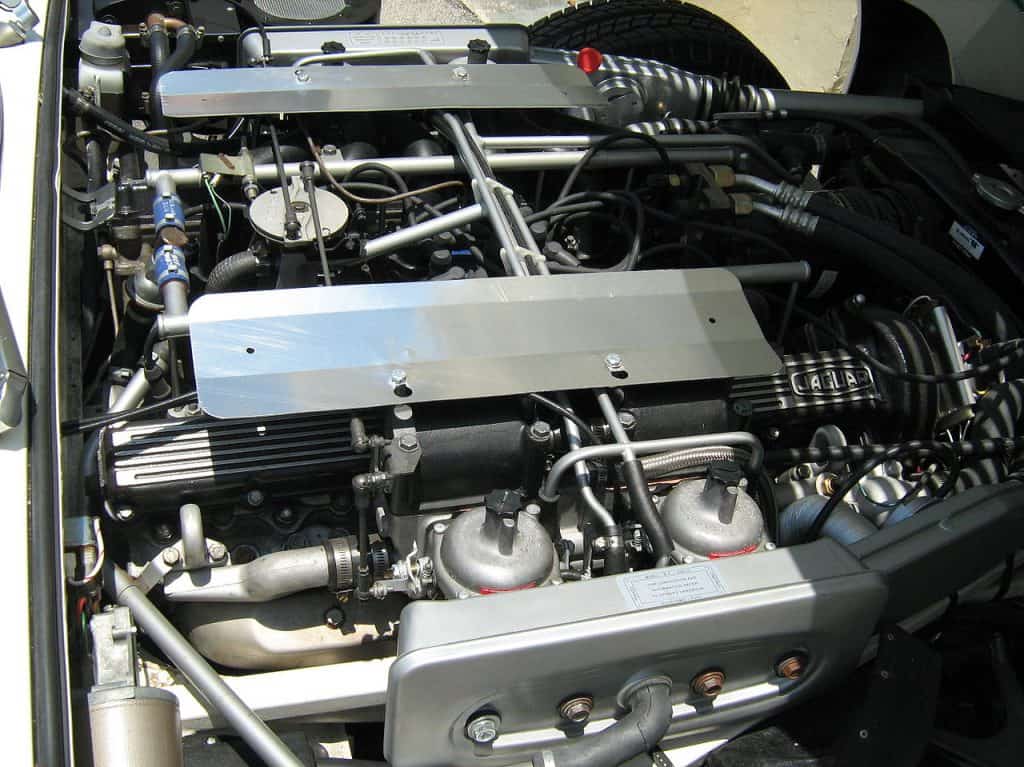 The timing belt, motor mount, and fuel intake issues are some of the harder issues that cause the engine to tremble.
The timing belt, motor mount, and fuel intake issues are some of the harder issues that cause the engine to tremble.
Given all of this, it will be challenging to estimate the cost of engine repair until you identify the issue. And the only way to do that is to investigate the issue with a mechanic you can trust. They’ll be able to explain the problem with your faulty engine and how much it will cost to fix it.
Does Fixing a Faulty Engine Make Sense?
A damaged engine can’t be avoided; it needs to be fixed. Driving a car with an engine issue is not safe to do so anymore. However, some folks won’t have the money to fix a broken engine.
Some individuals won’t want to spend a significant amount of money to fix an older vehicle’s engine issues.
The Conclusion
Engine issues are seen as being extremely vital, and neglecting them can result in serious harm. To save on increased maintenance expenses, it is advised that every vehicle owner keep an eye out for the warning symptoms of a faulty engine.
Numerous symptoms, such as shaking, overheating, smoke, or a loud engine, might point to an issue with the car’s engine. Additionally, issues with the car’s engine might be indicated by an oil leak, a rough engine, and an illuminated check engine light.
It is advised not to overlook any indications that an engine is malfunctioning. This is because early problem detection may help you save a lot of time, money, and effort. On the other side, neglecting the issue might result in more issues that could ultimately result in engine failure.
Although many individuals like doing their repairs, it is not advised to use trial and error when dealing with engine issues. This is because most DIY projects fail the first time, and any errors in engine repair might result in complex problems that would cause an engine to completely fail.
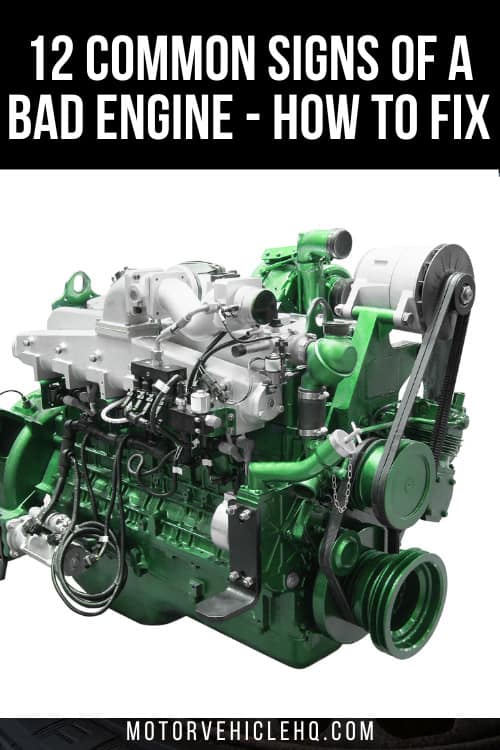
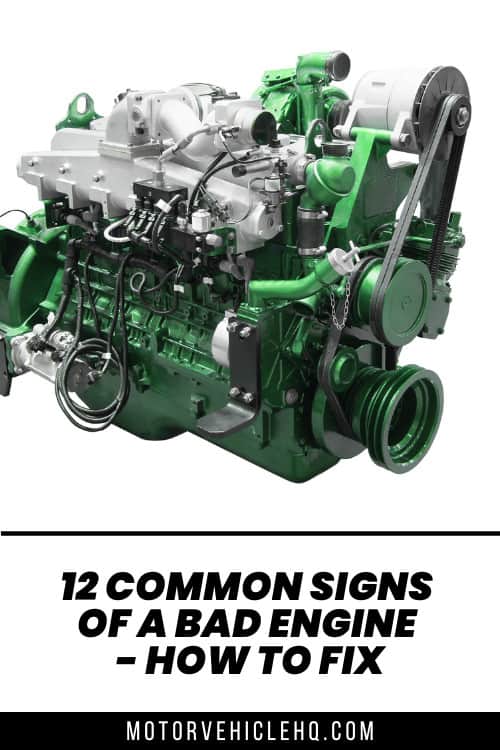

Jim Wicks is the founder of MotorVehicleHQ. With over two decades of experience in the automotive industry and a degree in Automotive Technology, Jim is a certified car expert who has worked in various roles ranging from a mechanic, car dealership manager, to a racing car driver. He has owned more than 20 cars over the past 15 years. Ask him about any vehicle you see on the road and he can tell you the make, model and year. He loves the aesthetics of all things cars, and keeps his vehicles in pristine condition.
In his free time, Jim enjoys getting his hands dirty under the hood of a classic car or taking long drives along the country roads. His favorite car? A 1967 Shelby GT500, a true classic that, according to Jim, “represents the pure essence of American muscle.”